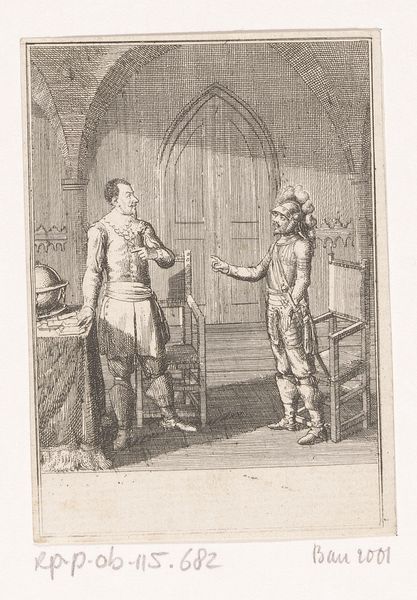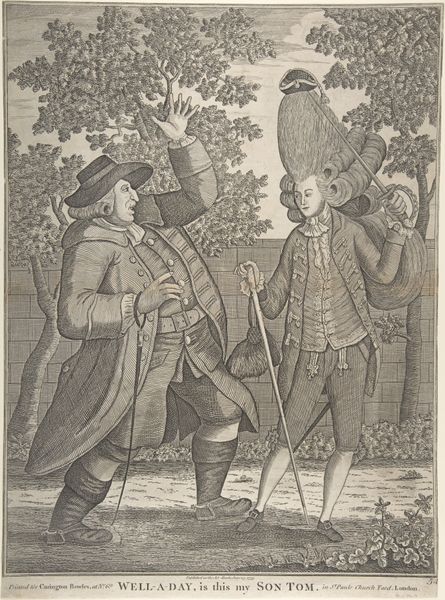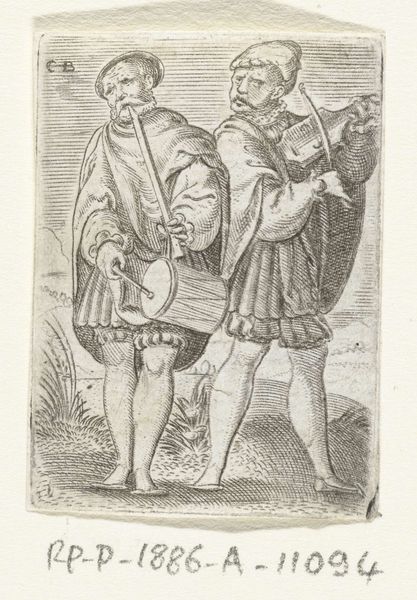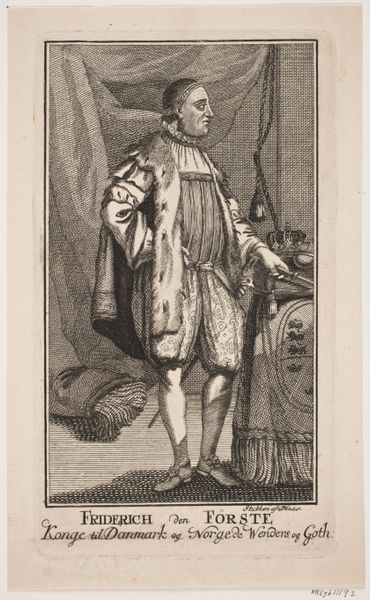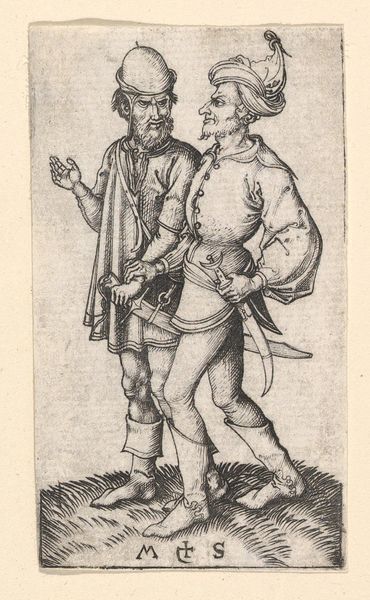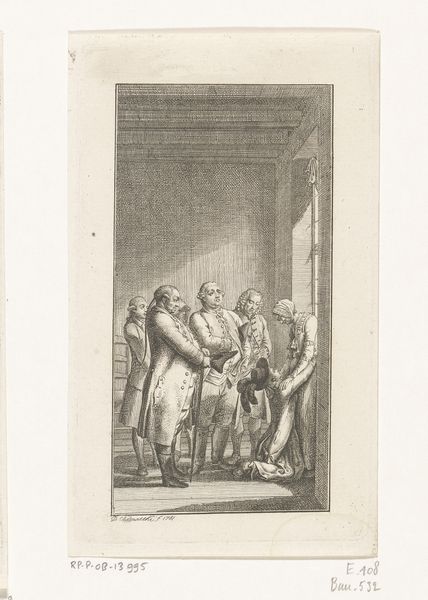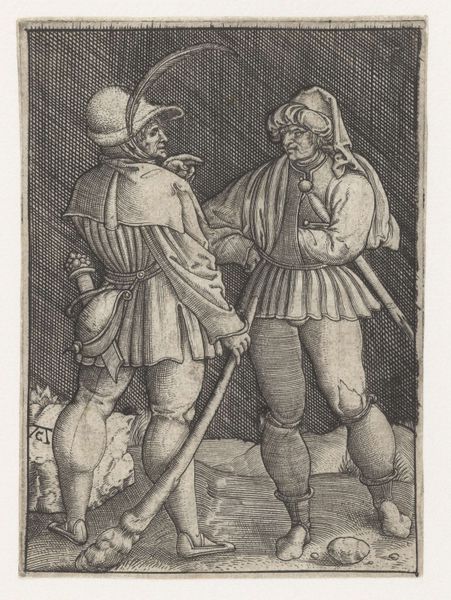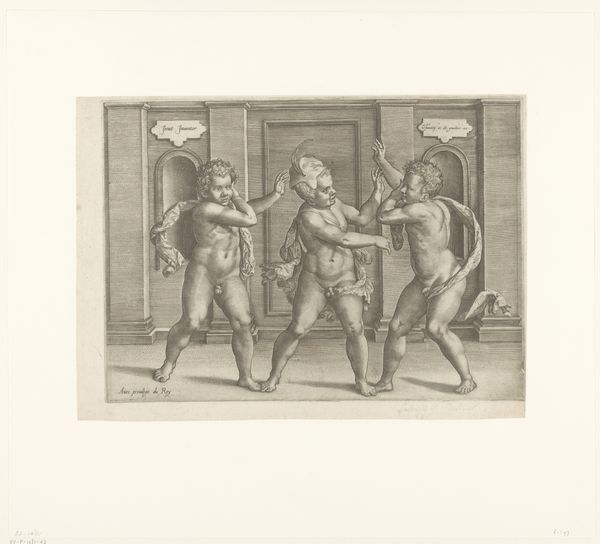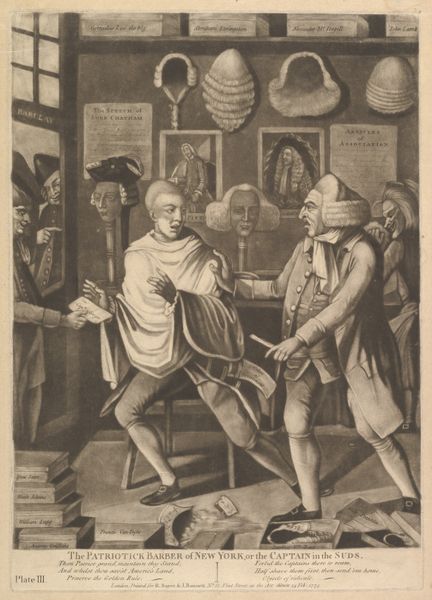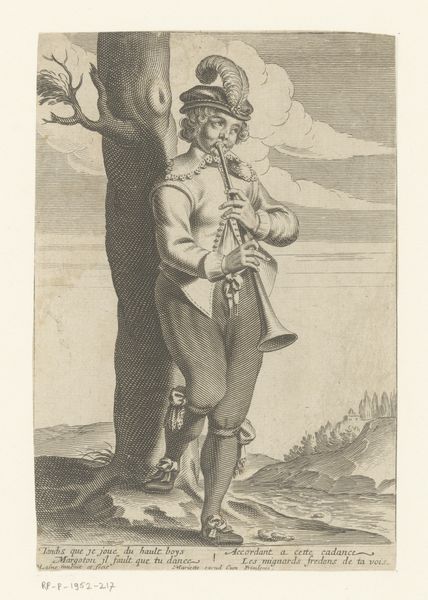
engraving
#
portrait
#
baroque
#
old engraving style
#
figuration
#
line
#
portrait drawing
#
genre-painting
#
engraving
Dimensions: height 378 mm, width 260 mm
Copyright: Rijks Museum: Open Domain
Editor: This engraving, "Brighella en Trivelino," is from somewhere between 1603 and 1657, and it’s interesting. I’m struck by the detail in the figures' costumes – it’s really impressive, especially considering the medium. What stands out to you? Curator: What I find compelling here is the labor inherent in producing such an intricate engraving. Consider the craftsman’s skill and time dedicated to creating these fine lines, each precisely placed to construct these Commedia dell'Arte figures. It asks us to question the social function of printmaking, its role in disseminating images and stories. Think about who had access to this image, and the kind of artisanal work it represents. Editor: That’s interesting! I was mostly looking at the artistry, but I see your point about the labor and accessibility. Does the choice of engraving as a medium speak to the subject matter in any way? Curator: Absolutely. Engraving, as a reproducible medium, aligns with the performative nature of Commedia dell’Arte. Both rely on repetition and adaptation, taking traditional characters and situations, and reinterpreting them for different audiences. Furthermore, look at the stark black and white, what limitations of production and access might those necessitate, and what kind of circulation of wealth do those considerations entail? Editor: So it’s not just about the finished image, but about the whole system of production and consumption surrounding it? Curator: Precisely. It’s about acknowledging the social relations embedded in the very materiality of the artwork. It's not just about high art, but also about the artisan's place in society, and who ultimately benefits from their skilled work. Editor: That really changes how I see it. I'll definitely be thinking about the materials and labor involved more often now. Thanks! Curator: My pleasure. Seeing art through a material lens reveals a deeper understanding of its purpose and the society that shaped it.
Comments
No comments
Be the first to comment and join the conversation on the ultimate creative platform.
